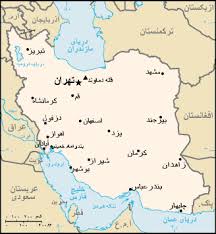 The Jewish community in Iran is among the oldest in the world. The first Jewish settlements date back to 721 BC. The Parthians, ruled the country for 5 centuries and gave the Jews broad religious, cultural or even legal autonomy. Jewish chronicles mention the Parthian period as one of the best in their history. The rise of the Sassanids ushered in 5 centuries of repressive policies with regard to religious minorities.
The Jewish community in Iran is among the oldest in the world. The first Jewish settlements date back to 721 BC. The Parthians, ruled the country for 5 centuries and gave the Jews broad religious, cultural or even legal autonomy. Jewish chronicles mention the Parthian period as one of the best in their history. The rise of the Sassanids ushered in 5 centuries of repressive policies with regard to religious minorities.
In the mid-seventh century, Persia became a province of the Arab-Muslim Empire. Muslim treatment of the religious minorities varied in accordance with the policies of the caliphs and attitudes of different governors. As dhimmis, Jews had, an inferior but protected status. By the twelfth century, Iranian Jews were largely involved in trade.
 Attitudes towards the Jews was in constant flux. Pogroms, as vicious as any in Eastern Europe, characterized 19th century Iran. There were restrictive rules: In 1889, the government prohibited Jews in Isfahan from going outside on wet days lest rainwater spread their impurity. Jews were also forbidden from touching food, speaking loudly, or purchasing any goods in the market.
Attitudes towards the Jews was in constant flux. Pogroms, as vicious as any in Eastern Europe, characterized 19th century Iran. There were restrictive rules: In 1889, the government prohibited Jews in Isfahan from going outside on wet days lest rainwater spread their impurity. Jews were also forbidden from touching food, speaking loudly, or purchasing any goods in the market.
Iran’s Jews fled from Iran in 1950s and during and again after the Iranian Revolution of 1979. The community numbering 80,000 plummeted to less than 20,000. This was a result of fear of religious persecution, economic hardships and insecurity after the deposition of the Shah regime and consequent domestic violence and the Iran–Iraq War.
The current Jewish population of Iran is 8,756 according to the most recent Iranian census. Tehran has 11 functioning synagogues, many of them with Hebrew schools. It has two kosher restaurants, and a Jewish hospital, an old-age home and a cemetery. There is a Jewish representative in the Iranian parliament. There is a Jewish library with 20,000 titles.